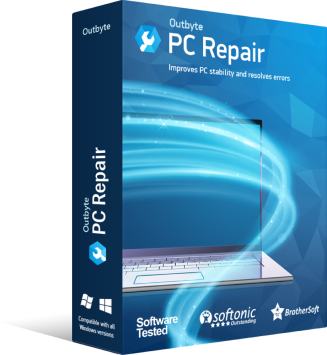Repair Utility
- File name: pc-repair-setup.exe
- Tool''s Developer: Outbyte
- Certified by: Symantec
- Download Size: 24 MB
- Downloaded: 1,143,473 times
-
Rating:

 Start Download
Start Download
Windows Operating Systems



802.11n Driver: Download & Update for Optimal Wireless Performance
A stable and high-speed wireless connection is essential for everything from streaming content to remote work. If your device uses an 802.11n Wi-Fi adapter, keeping its driver updated is critical to maintaining performance. Outdated, corrupted, or misconfigured drivers can lead to slow speeds, dropped connections, or even complete network failure. In this article, we’ll explore why these driver issues occur, provide step-by-step instructions to resolve them, and highlight the benefits of proactive driver management.
1. Common Causes of 802.11n Driver IssuesUnderstanding the root causes of driver-related problems helps prevent future issues and ensures smoother troubleshooting. Here are the most frequent culprits:
- Outdated Drivers: Hardware manufacturers regularly release driver updates to fix bugs, improve compatibility, and enhance performance. An outdated driver may lack optimizations for newer operating systems or security patches, leading to instability.
- Corrupted Installations: Interrupted downloads, improper installations, or malware can corrupt driver files. This often results in erratic Wi-Fi behavior, such as sudden disconnections or failure to detect networks.
- Operating System Updates: Windows or other OS updates can sometimes conflict with existing drivers. For example, a new OS version might deprecate features your current driver relies on.
- Incompatible Hardware: Installing a driver meant for a different adapter model or version can cause malfunctions. This often happens when users manually download drivers without verifying compatibility.
- Third-Party Software Conflicts: Security suites, VPNs, or network management tools might block or interfere with driver operations, especially if they’re configured aggressively.
Identifying the specific cause can save time when resolving issues. For instance, if your Wi-Fi stopped working after a Windows update, rolling back the driver or installing an updated version is likely the solution.
2. How to Update or Reinstall Your 802.11n DriverFollow these steps to ensure your 802.11n driver is correctly installed and optimized:
- Identify Your Adapter Model
Open Device Manager (pressWindows + Xand select it from the menu). Expand the Network adapters section and note the exact name of your 802.11n wireless adapter. - Download the Latest Driver
Visit the manufacturer’s official website (e.g., Intel, Realtek, or Broadcom) and search for your adapter model. Download the driver compatible with your OS version (e.g., Windows 10 64-bit). Avoid third-party download sites, as they may host outdated or modified files. - Install the Driver
- Manual Installation: Open Device Manager, right-click your adapter, and select Update driver. Choose Browse my computer for drivers and navigate to the downloaded file. Follow the prompts to complete the installation.
- Automatic Installation: Some manufacturers provide a setup executable in the downloaded driver package. Double-click the file and follow the on-screen instructions.
- Uninstall Previous Drivers (If Needed)
If the new driver doesn’t resolve the issue, uninstall the old one first. In Device Manager, right-click the adapter, select Uninstall device, and check Delete the driver software for this device. Restart your PC, then install the new driver. - Verify and Test
After installing, return to Device Manager to confirm the driver version matches the one you downloaded. Test your Wi-Fi connection for stability and speed using tools like Speedtest.net or a large file download.
Troubleshooting Tips:
- If updating causes new issues, use the Roll Back Driver option in Device Manager.
- Disable third-party firewalls or VPNs temporarily to rule out software conflicts.
- Reset your router and modem to eliminate external interference.
Maintaining an up-to-date 802.11n driver is a simple yet effective way to optimize your wireless network performance. Outdated or faulty drivers not only degrade speed and reliability but also expose your system to security vulnerabilities. By proactively checking for updates, verifying compatibility, and using trusted sources for downloads, you can avoid most common connectivity issues.
Remember, driver management isn’t a one-time task. Set reminders to check for updates quarterly, or enable automatic updates if your manufacturer offers the option. A small investment of time today can prevent hours of frustration tomorrow—and keep your wireless connection running at its best.
|
Ultimate Photo Viewer: Organize, Enhance, and Share Your Memories – Discover the perfect tool to effortlessly organize your photo library, enhance images with powerful editing features, and seamlessly share cherished moments. Transform your memories with intuitive tools, advanced filters, and cloud integration, all in one user-friendly platform.
|
|
Learn how to enable Bluetooth on Windows 11 quickly with this step-by-step guide. Discover settings navigation, device pairing, and troubleshooting tips for seamless wireless connectivity.
|
|
Experience the perfect harmony of technology and passion. Drive the Sound explores cutting-edge innovations in audio engineering, empowering you to craft immersive soundscapes and elevate every listening moment.
|
|
The Intel Play QX3 Computer Microscope transforms your PC into a portal for exploring microscopic wonders. Capture real-time digital images and videos, magnify specimens up to 200x, and dive into hands-on science—ideal for curious minds, classrooms, and at-home discovery.
|
|
Struggling with the 'No Audio Output Device Installed' error in Windows 10? Learn quick fixes like updating drivers, enabling audio devices via Device Manager, running troubleshooting tools, and checking hardware connections to restore sound on your PC.
|
|
The TEAC USB Floppy Drive offers a seamless solution for accessing legacy data from 3.5-inch floppy disks while delivering high-speed performance for modern workflows. Built with durable construction, it ensures reliable file retrieval, transfer, and storage, bridging the gap between vintage media and current USB-compatible devices. Ideal for archivists, professionals, and retro tech enthusiasts, this drive combines backward compatibility with efficient plug-and-play functionality.
|
|
Keep your PC running smoothly by updating its drivers. This quick guide explains how to identify outdated drivers, find reliable sources for updates, and install them correctly to boost system speed, enhance stability, and fix compatibility issues. Learn simple steps to optimize performance in minutes.
|
|
Virtual Audio Cable enables effortless audio routing between apps, creating virtual connections for real-time streaming. Perfect for mixing, recording, or transferring audio across software without physical devices. Ideal for creators, streamers, and professionals seeking flexible, high-quality audio management. Simplify multitasking and enhance workflow with seamless integration.
|
|
Download the latest drivers for Intel Core i5-2400 CPU (3.10 GHz) compatible with Windows 10 (version 10.0). Ensure optimal performance, stability, and hardware compatibility for your system. Find official and updated drivers for chipsets, graphics, and peripherals here.
|
|
Discover how EOS Utility Tools streamline workflows, automate tasks, and optimize resource management to boost productivity. Unlock seamless integration, reduce downtime, and achieve peak performance for your projects or business operations with precision-driven solutions.
|
| See all queries |



